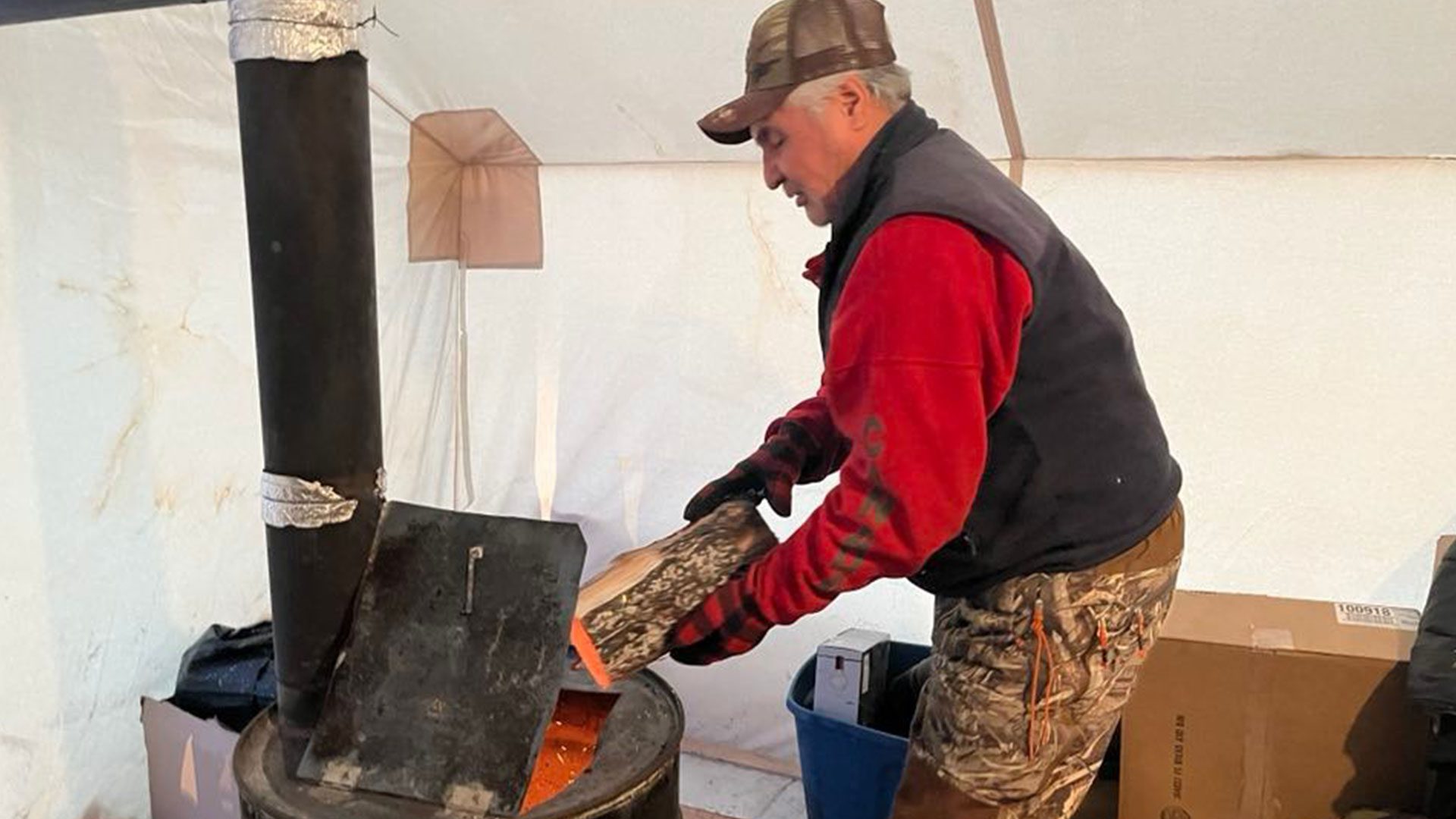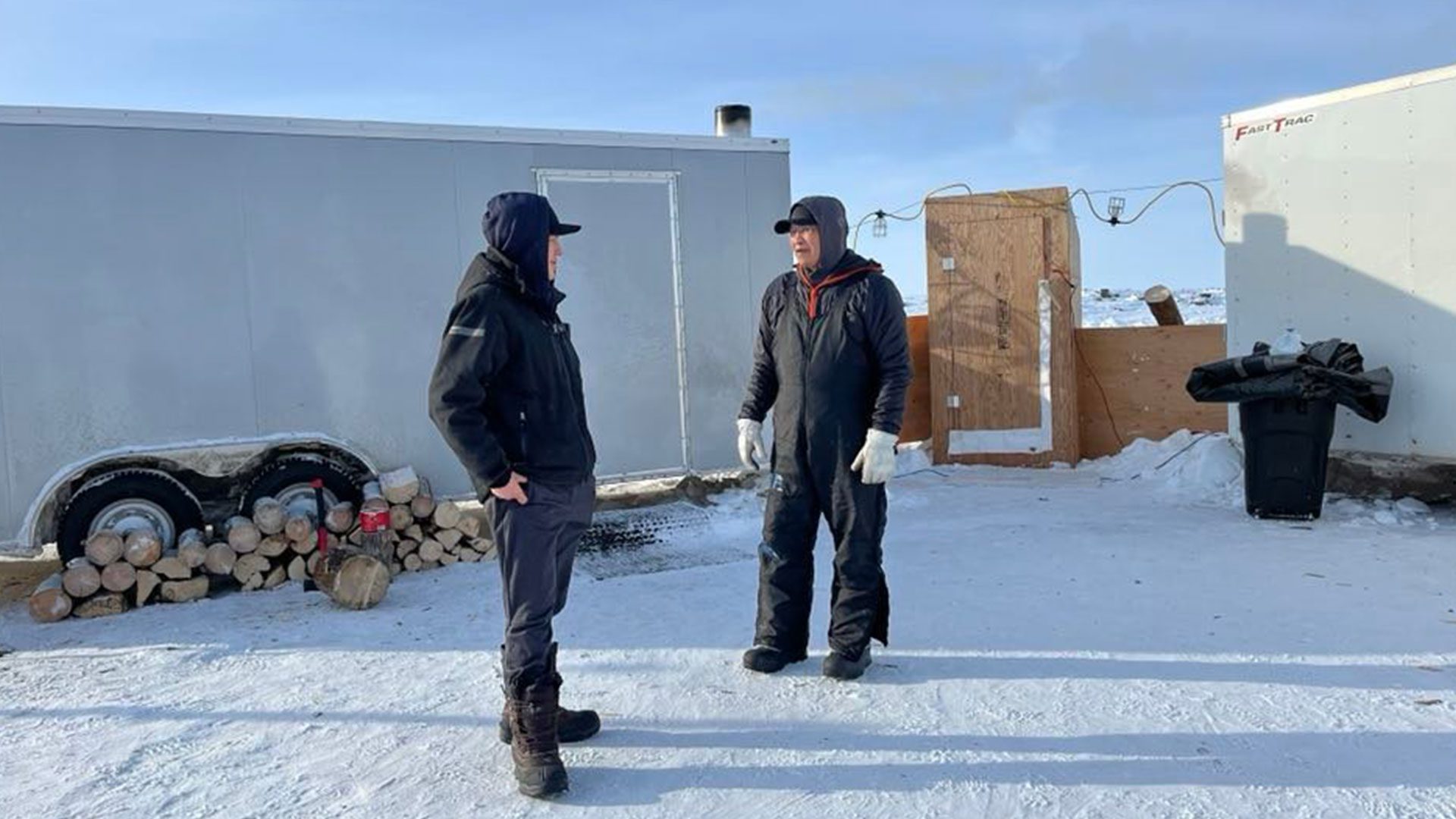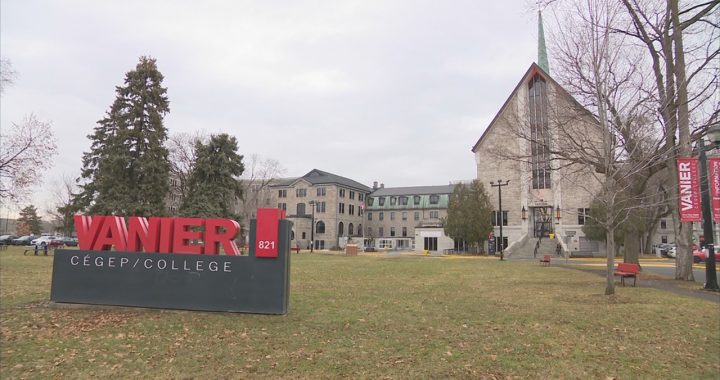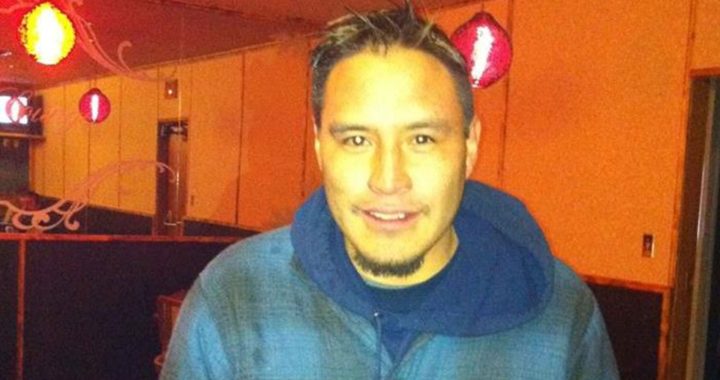Two decades ago Jimmy Mantla didn’t have to look through a pair of binoculars for ekwǫ̀ – caribou.
“We would come to the barren lands for caribou and make dry meat for the summer and before the snow melts we would go back with the dogs,” Mantla said. “Between November and February, it was cold, but now you look at it, it has changed.”
Mines, animal predation, modern hunting methods and climate change have decimated the Bathurst herd in the Northwest Territories from half a million in 1986 to roughly 6,000 in 2021, a devastating decrease of nearly 99 per cent.
“Before in the 1990s there use to be lots of caribou where we lived,” Mantla said. “Where the caribou use to go before right from Gamètì to Whatì to Behchokǫ̀ all of it burned and the caribou don’t go to the burn anymore because they don’t pass the treeline – they would have no food.”
Mantla is part of the third annual Tłı̨chǫ government’s ekwǫ̀ barren ground caribou monitoring program.

The program ran in March for the duration of the Tibbet to Contwoyto winter road stretching 400 km north of Yellowknife.
The six staff stationed at the camp to support and encourage caribou harvests rooted in traditional values.
Richard Rabesca, a supervisor with the camp records information from hunters such as how many cows and bulls they take, the health of the animals and general observations.
The monitors patrol the road and offer suggestions to hunters if they see any infractions on traditional methods of harvests.
“The other day someone knocked down a muskox and it’s heavy for the muskox meat, so they dragged it with a skidoo across trying to get close to their van, but we explained you cannot drag an animal, it’s a traditional thing,” he said.
In 2015, in response to the low numbers, the territory’s Department of Environment and Natural Resources, along with co-management partners developed a mobile management zone.
In the no-hunting zone, boundaries change weekly according to caribou collect tracking data.

Rabesca notes the majority of hunters are harvesting in a respectful way, but there are exceptions and those caught in the zone hunting by ENR face hefty fines and risk their meat being confiscated.
“Whoever decides the mobile zone needs to educate the public more so people have a better understanding of why the zone changes and gets bigger,” Rabesca said.
“It’s not the main herd but a little group as well who are trying to catch up to the main herd, that’s why the zoning is bigger.”
Jarvis Lamouelle, another Tlicho monitor, said it’s important for Indigenous government conservation efforts to collect data collection on individual and community hunts, to detect if there’s a strain on populations due to overharvesting.
“In Wekweètì there are 300 people there and if they are going to do a community hunt they will shoot like 50 and they give out caribou to whoever needs, but in Behchoko they’re close to 5,000 people and if they do a community hunt they are shooting like 100 for the community,” Lamouelle explains.
In the N.W.T., Indigenous harvesters do not require a tag for caribou nor are there limits on how they can harvest along the winter road, outside of the management zone.
“My concern is people shooting calves; they will see a caribou and quickly shoot it then bring it back and realize it’s a calf,” Lamouelle said.
“There are other animals that survive off of caribou too, like wolverines, wolves and even bears so it’s not just us shooting caribou, these animals have to survive too.”
Along with monitors supporting hunters, the program also trains younger monitors with on-the-land skills.
“I’d say there’s a growing gap because I know there are people my age who don’t even know the basics to come out here, meanwhile older hunters just follow the lakes and don’t even need a GPS,” said Colby Grosce, a youth monitor.

He recognizes the stark contrast in hunting methods between his generation and his elders.
“Hunting is a little more luxurious out on the ice road and people will ditch their stovepipes and poles just because they have too much meat,” Grosce. “Some people lie. One interview I did a guy said he got five caribou and I looked in the back and there was over ten.”
Despite dwindling numbers, the young monitors have hope for caribou recovery, the solution, and combining modern and traditional practices of conservation.
To describe this Grosce cites the Tlicho visionary Chief Jimmy Bruno, a leader who signed Treaty 11 on behalf of Dogrib people.
“Like Chief, Jimmy Brunos said ‘be like two people,’ so to move forward in this world you have to be like two people and follow the ways of our people and the ways of the white man,” he said.










